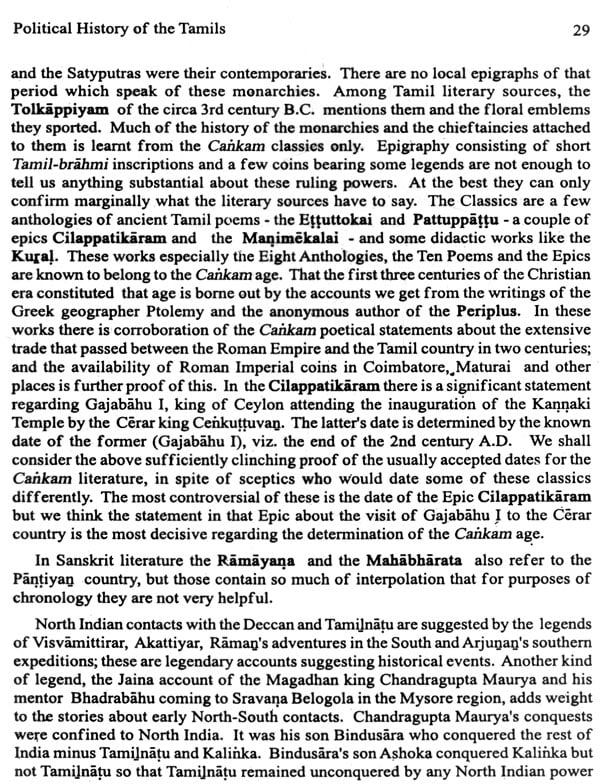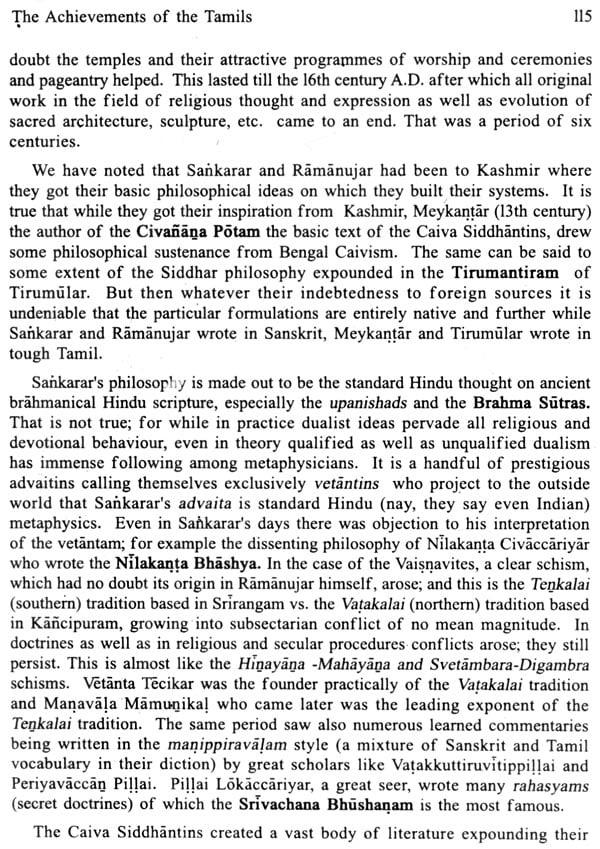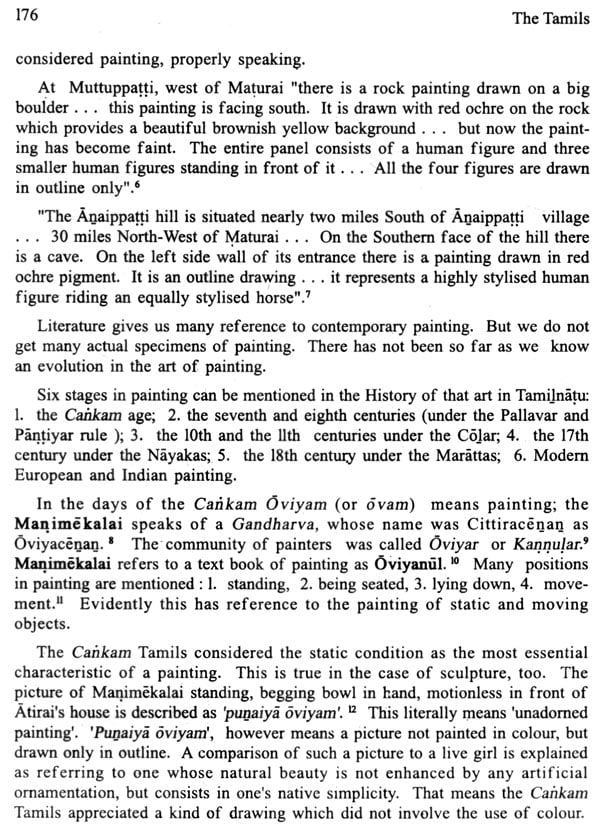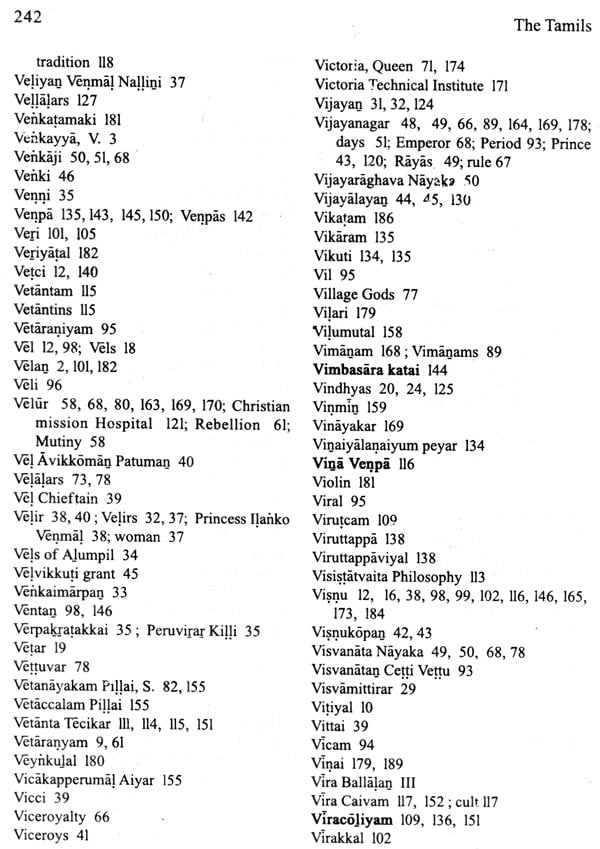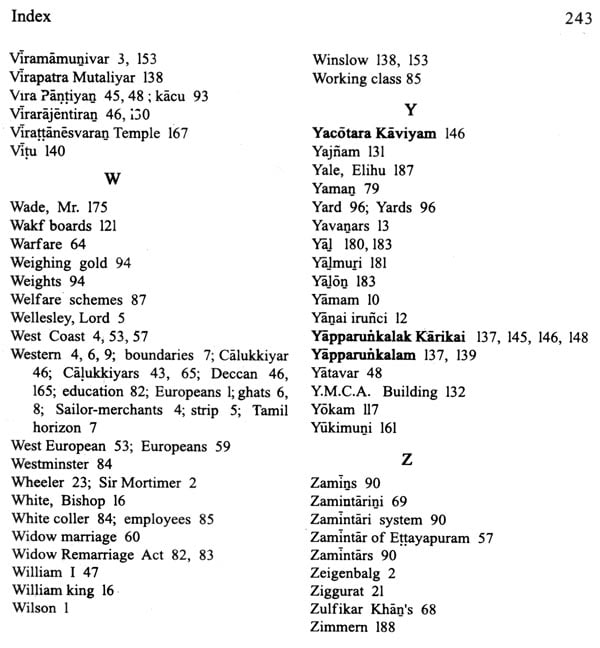
The Tamils - Their History, Culture and Civilization (An Old and Rare Book)
Book Specification
| Item Code: | NAY787 |
| Author: | N. Subrahmanian |
| Publisher: | Institute of Asian Studies, Chennai |
| Language: | English |
| Edition: | 1996 |
| Pages: | 250 |
| Cover: | PAPERBACK |
| Other Details | 10.00 X 7.50 inch |
| Weight | 430 gm |
Book Description
I am grateful to the Institute of Asian Studies for coming forward to publish this work.
The history and culture of Tamilnadu spanning 25 centuries and more but with its beginning steeped in darkness and the later centuries marked by many tantalizing blanks, remained a half forgotten past wrapped up in incredible myths, to the Tamils themselves. There are considerable source materials by way of literature and epigraphs but no historical writings as such to facilitate the composition of a complete history of the people. They shared with Indians everywhere in the subcontinent an aversion to history. Their delight in edifying mythology was greater than their commitment to truthful history. In the 18th century they remembered pretty little about their own past. They cherished some distorted political information, traditional accounts of social institutions and conventionalized myths.
Like a dashing prince coming from the far west and motivated by fate, to wake up an oriental princess who had been asleep for long and who when awakened was found to suffer from mild amnesia, and so had to be revived and reminded about her past and to win her to modem princely ways, Western Europeans came to India: and the subcontinent, including Tamilnadu was discovered.
Archaeologists, paleographers, comparative philologists and linguists as well as historians using modem tools of research worked all over India and beginning with the translation of Manu and Kalidasa and the deciphering of the Ashoka Brahmi script by James Principe in 1837, the discovery of India began and through the efforts of many Indologists like Colebrook, Wilson, Keith and Rhys David’s as also the great Max Muller, discovered ancient India for the modem Indian.
But it is also true that these discoverers, being based in different parts of North India and especially Calcutta, concentrated on Sanskrit and Pali sources ; and it was only late in the 19th century that European scholars began to think of Tamil sources for the discovery of Tamilnadu, The decipherment of ancient Dravidian and particularly Tamil-Brahmi scripts and the printing and publication of ancient Tamil texts beginning in the middle of the 19th century and gaining momentum as decades passed by opened up the dim past of this part of the peninsula. The first Indian language book to be published was in Tamil and it saw the light of day in October 1578. After a lapse of more than a century, printing of Tamil books revived and Bartholomeaus Zeigenbalg (1706), a German Missionary in Tarankampati (Tranquebar) made printing Tamil works a common industry. The first printing press in Madras (the SPCK Press) was set up around 1761.
The discovery of ancient Tamilnadu required the help of disciplines like history and archaeology and this was· facilitated by the new model schools - started in the later part of the 18th century - which taught to new generations of Tamils the till then little known and less taught subjects of History and Geography. Here too the ~Christian Missionaries played a great part. The new system of education which evolved through the efforts of benevolent pioneers, e.g. Rev. Schwartz, a German Missionary, and the enlightened Governors of Madras Sir Thomas Munro (1820-27) and Sir Charles Trevelyan (1859-60), in course of time bred the native scholars who assisted the European historians and archaeologists who worked here. The introduction of English as the medium of instruction in schools as well as the official language of government helped gather together in a single pool the new knowledge. A single language and a simple methodology - both suited and needed for scientific historical research work - made communication among the concerned academics easy and fruitful.
Robert Bruce Foote was the true pioneering archaeologist who examined prehistoric burial sites near Aticcanallur (Atityanallur) on the banks of the Tamiraparani. The artifacts discovered there -could be traced back to the iron age of the Tamils. Bruce Foote discovered some Paleolithic tools near Pallavaram, Madras. This takes the existence of tool using man in Tamilnadu to very ancient times when man appeared in Europe. After Bruce Foote came Alexander Rea, who 'was Assistant Superintendent in the Madras Museum. He continued the excavations near Aticcanallur from 1899-1905 and discovered many more artifacts there and listed them in his 'Catalogue of Prehistoric Antiquities from Adichchana11ur and Perumbair' (1915).
"The pottery of Aticcanallur is more primitive than the megalithic pottery of other sites. There is found here a quantity of bronze ware and gold diadems or mouthpieces not found elsewhere in India resembling typological parallels in Palestine about c. 1200 B.C. as also in Syria and Cyprus ... The evidence from Aticcanallur also appears to suggest that the worship of Murukan or Velan a popular deity with the Tamils from very early times, was known at the time".' This nearly confirms the theory of Prof. Elmendorf that the Tamils originated in the Middle West.
Book's Contents and Sample Pages


